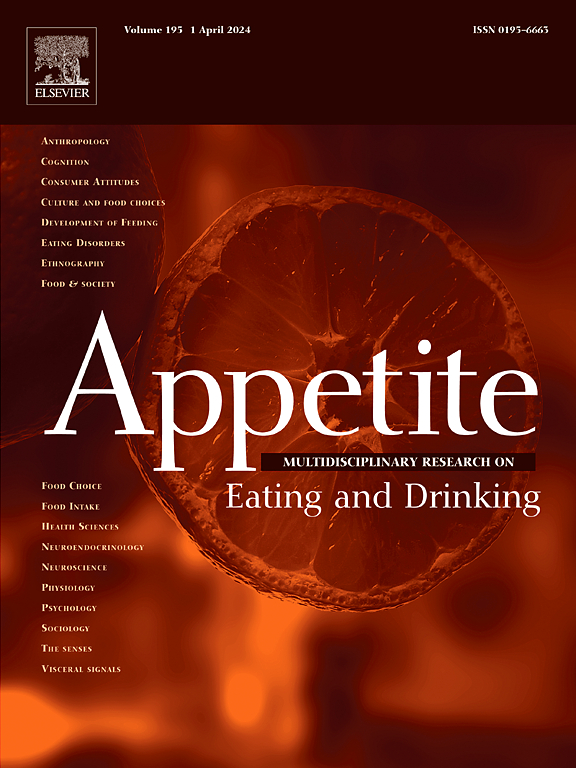Variety-seeking behavioral markers in an immersive virtual reality food buffet are associated with greater food and energy intake in laboratory meals
IF 4.6
2区 医学
Q1 BEHAVIORAL SCIENCES
引用次数: 0
Abstract
Food variety promotes intake, and the propensity to seek a greater variety, measured by the number of unique foods selected for a meal, may predict increased food consumption. We explored whether variety-seeking in a validated immersive virtual reality (iVR) food buffet was related to measured intake in lab meals. Adults (n = 91; 18-71y; 64 female) were asked to select foods for a meal in an iVR buffet before consuming a standard lab meal once a week for 2 weeks. The iVR buffet contained 30 foods, 15 lower energy-dense (LED) and 15 higher energy-dense (HED), including entrees, sides, soups, and desserts. The lab meal consisted of 3 LED foods (broccoli, grapes, chicken) and 3 HED foods (pasta, rolls, cookies). Food selection in the iVR buffet was operationalized into 3 variety-seeking behavioral markers based on the unique foods selected: (1) total, (2) HED, and (3) LED. Seeking a greater total variety in iVR was a significant predictor of intake in lab meals, with each additional unique food selected in iVR relating to an additional 7.4 g of food consumed in lab meals (p = 0.01). These associations demonstrate specificity: (1) seeking a greater variety of HED foods in iVR was associated with increased intake of HED foods in lab meals, and (2) seeking a greater variety of LED foods in iVR was associated with increased intake of LED foods in lab meals. These preliminary findings indicate that variety-seeking behavioral markers measured in an iVR buffet are related to measured food intake.
求助全文
约1分钟内获得全文
求助全文
来源期刊

Appetite
医学-行为科学
CiteScore
9.10
自引率
11.10%
发文量
566
审稿时长
13.4 weeks
期刊介绍:
Appetite is an international research journal specializing in cultural, social, psychological, sensory and physiological influences on the selection and intake of foods and drinks. It covers normal and disordered eating and drinking and welcomes studies of both human and non-human animal behaviour toward food. Appetite publishes research reports, reviews and commentaries. Thematic special issues appear regularly. From time to time the journal carries abstracts from professional meetings. Submissions to Appetite are expected to be based primarily on observations directly related to the selection and intake of foods and drinks; papers that are primarily focused on topics such as nutrition or obesity will not be considered unless they specifically make a novel scientific contribution to the understanding of appetite in line with the journal's aims and scope.
 求助内容:
求助内容: 应助结果提醒方式:
应助结果提醒方式:


